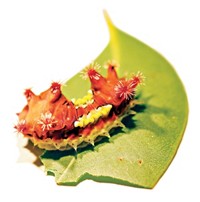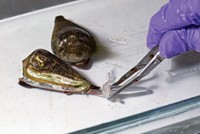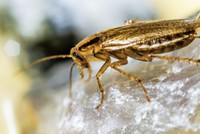Advertisement
Grab your lab coat. Let's get started
Welcome!
Welcome!
Create an account below to get 6 C&EN articles per month, receive newsletters and more - all free.
It seems this is your first time logging in online. Please enter the following information to continue.
As an ACS member you automatically get access to this site. All we need is few more details to create your reading experience.
Not you? Sign in with a different account.
Not you? Sign in with a different account.
ERROR 1
ERROR 1
ERROR 2
ERROR 2
ERROR 2
ERROR 2
ERROR 2
Password and Confirm password must match.
If you have an ACS member number, please enter it here so we can link this account to your membership. (optional)
ERROR 2
ACS values your privacy. By submitting your information, you are gaining access to C&EN and subscribing to our weekly newsletter. We use the information you provide to make your reading experience better, and we will never sell your data to third party members.
Biological Chemistry
New family of venom peptides discovered
Ampulexins help wasps subdue cockroaches to serve as hosts
by Celia Henry Arnaud
February 12, 2018
| A version of this story appeared in
Volume 96, Issue 7
Female emerald jewel wasps of the species Ampulex compressa inject venom into the brains of cockroaches to subdue them so they can serve as edible hosts for wasp eggs and larvae. The venom is a complex mixture of proteins, peptides, and small molecules. By analyzing wasp venom with mass spectrometry, Michael E. Adams and coworkers at the University of California, Riverside, found that the venom contains a previously unknown family of peptides, which the researchers dub “ampulexins” (Biochemistry 2018, DOI: 10.1021/acs.biochem.7b00916). The wasp’s venom apparatus consists of a venom gland and a venom sac, both of which produce ampulexins. The two structures have distinct peptide and protein profiles, with milked venom more closely resembling that of the venom sac. The researchers tried to determine the ampulexins’ function and found that they are neither antimicrobial nor cytotoxic. When they injected one of the peptides, ampulexin-1, into cockroaches, the insects withstood higher electric voltages without trying to escape. Although the effect lasted for less time than it does when wasps sting cockroaches, the findings suggest that the peptides play a role in the early stage of subduing the cockroaches. Adams’s lab is now working to identify ampulexins’ cellular and molecular targets in the nervous system and to comprehensively analyze gene and protein expression in the wasp venom.





Join the conversation
Contact the reporter
Submit a Letter to the Editor for publication
Engage with us on Twitter